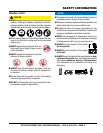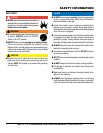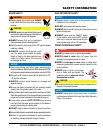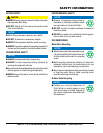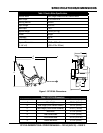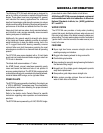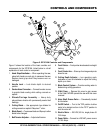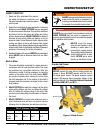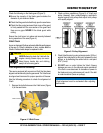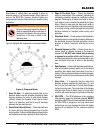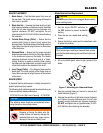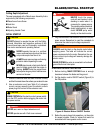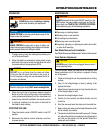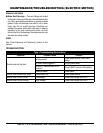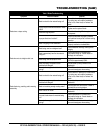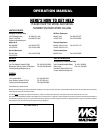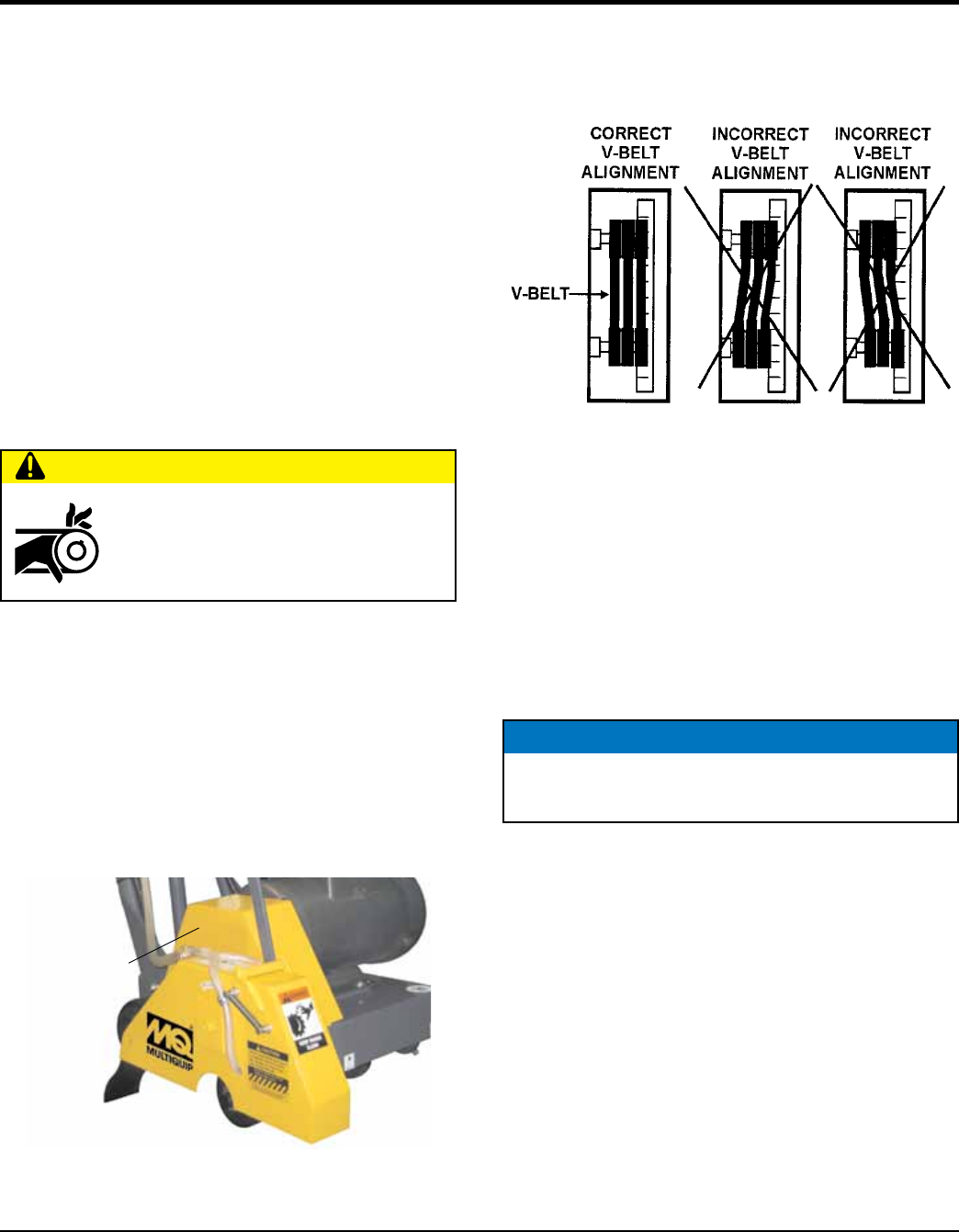
SP1E16A PAVEMENT SAW • OPERATION MANUAL — REV. #0 (04/14/10) — PAGE 17
INSPECTION/SETUP
Check the following on the blade guard (Figure 3):
Ensure the capacity of the blade guard matches the
diameter of your diamond blade.
Check that the guard is bolted firmly upon the saw frame.
Check that the spring tensioned front cover of the guard
is firmly seated with the rear section of the guard and
there are no gaps. NEVER lift the blade guard while
cutting.
Ensure the v-belt cover is in place and securely fastened
during operation of the saw (Figure 4).
V-Belt Check
A worn or damaged V-belt can adversely affect the performance
of the saw. If a V-belt is defective or worn, replace ALL the
V-belts. V-belts should always be replaced in sets.
V-belt Alignment and Tensioning
This saw is equipped with a premium V-belt that has been
aligned and tensioned by factory personnel. The V-belt must
be aligned and tensioned for proper operation of the saw.
Use the following procedure to check the alignment of
V-belt:
1. Remove the bolts that secure the V-belt cover (Figure
4) to the saw frame.
Figure 4. V-Belt Cover
CAUTION
NEVER attempt to check the V-belt with the
engine running. Severe injury can occur.
Keep fingers, hands, hair, and clothing
away from all moving parts.
V-BELT COVER
2. Check uniform parallelism (Figure 5) of V-belt and
pulley (sheaves). Use a straight-edge or machinist's
square against both pulleys and adjust both pulleys
until equally aligned.
Figure 5. Pulley Alignment
3. Check V-belt tension by using a tension meter (3.0 lbs.)
against the inside belt at a mid point between the two
pulleys, or by deflecting the center belt at a mid point
3/16" (5 mm).
4. DO NOT over or under tighten the V-belt. Severe
damage can occur to the saw and engine crankshaft
if the belt is over-tensioned. A decrease of power to
the blade and poor performance will result if the belt
is under-tensioned (loose on pulleys).
NOTICE
V-belt alignment must be rechecked after adjusting
belt tension.



